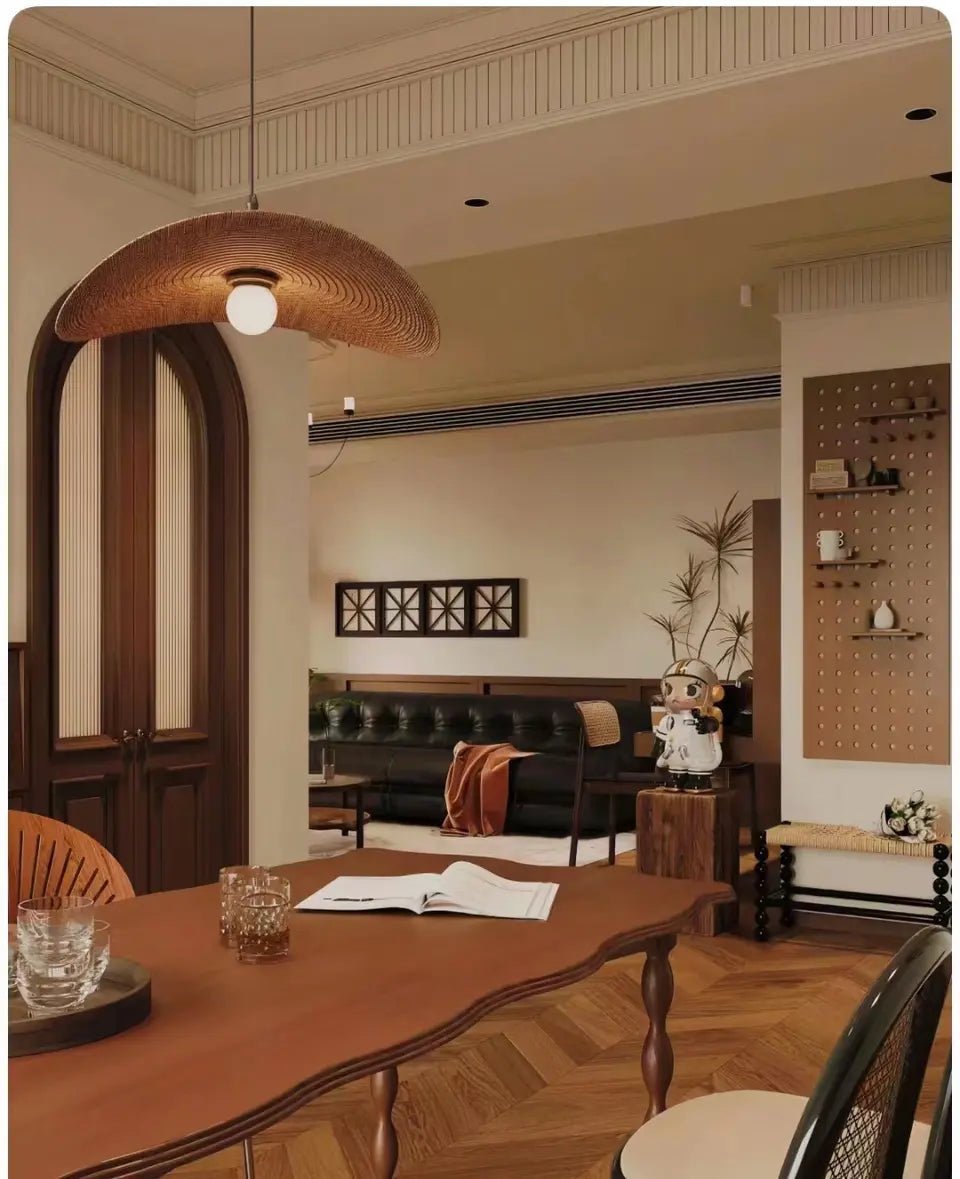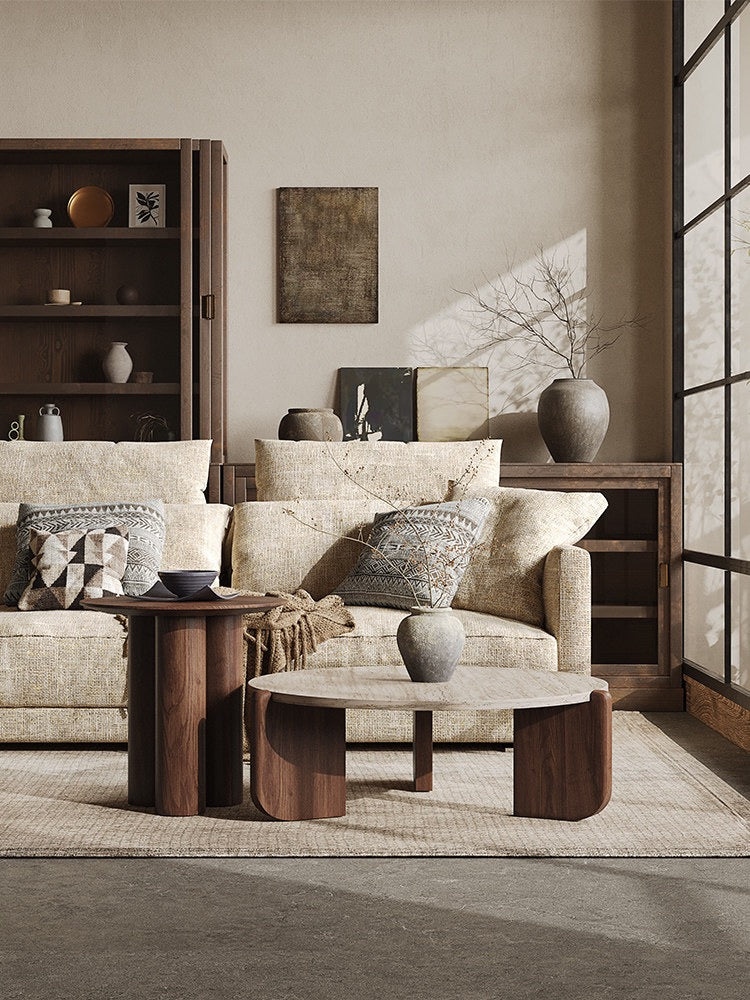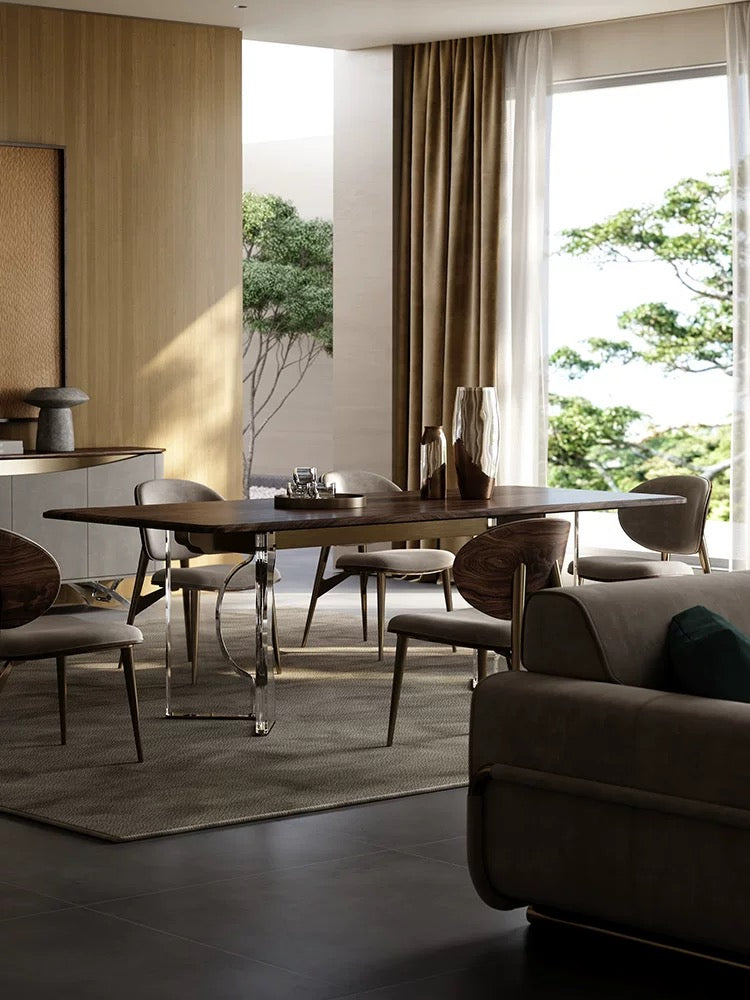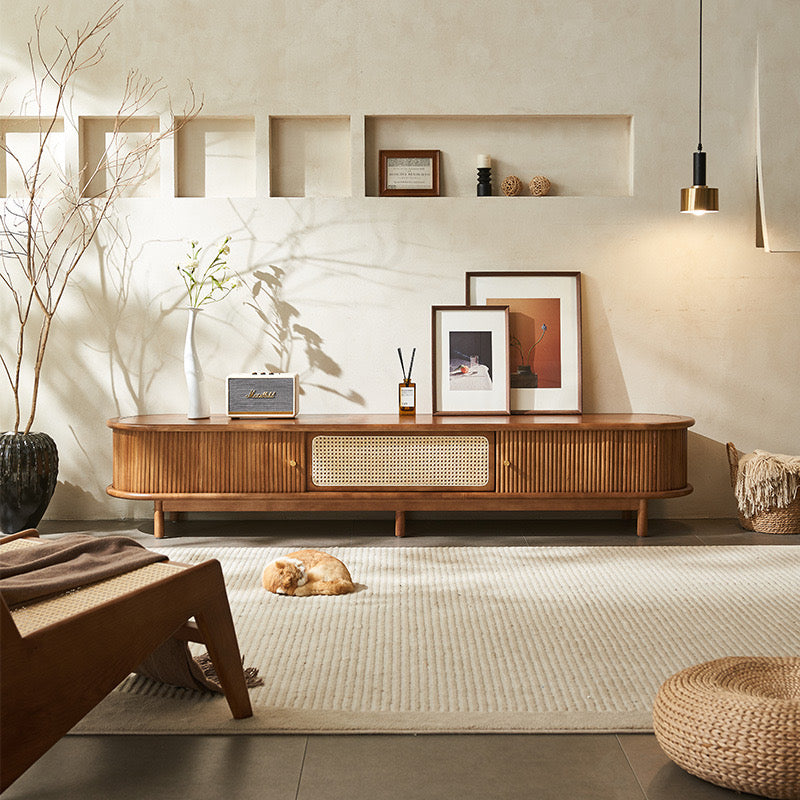
This cabinet has two faces: one reveals its owner's inner heart, and the other contains its wealth
, by Magico Home, 5 min reading time

, by Magico Home, 5 min reading time
In 2019, we visited Chandigarh, India, specifically to explore Pierre Jeanneret's Chandigarh furniture, as well as Le Corbusier's buildings, including the Supreme Court and Parliament.
At that time, the Chandigarh series furniture was no longer allowed out of India. We carefully examined the entire series in several museums and took numerous detailed photos.

After returning, we gradually launched original Chandigarh series furniture, made from solid Burmese teak.
In 2023, we discovered Japanese-designed furniture and modified Pierre Jeanneret's magazine cabinet. Furthermore, the magazine cabinet's flap design wasn't just used by one or two brands, but by several Japanese furniture brands.

We previously didn't value Japanese furniture because the materials used were average, and while the craftsmanship was acceptable, the resulting furniture didn't feel high-end. But after seeing this cabinet, I thought about it again and felt that the Japanese design was quite ingenious. This cabinet has ample storage capacity, is highly functional, and is also quite attractive. We could learn from their ideas and use the familiar Burmese teak wood paneling and craftsmanship to create a magazine cabinet with hinged doors! This way, we can preserve the Pierre Jeanneret materials while also solving the problem of the original being too large for home use (the Chandigarh series is actually office furniture).

This is the Chandigarh hinged door combination cabinet.
Pierre Jeanneret's original design was a large cabinet with 10, 20, or even 30 compartments, and was tall and bulky. We borrowed from the Japanese ideas, taking parts of the original design and reducing the cabinet size to create a combination cabinet. The hinged door combination cabinet has two basic units: a four-compartment hinged door cabinet and a two-compartment hinged door cabinet with four drawers. Each cabinet can be fitted with an optional base, allowing it to be placed on the floor to protect against moisture. The advantage of converting a large cabinet into a modular unit is that it's compact, takes up less space, and can be freely combined. Whether in a large villa or a small apartment, from a living room to a dining room, study, bedroom, or children's room, it can meet any practical need.
You can even store clothes here one day and dishes there the next. There are no fixed rules for what function a cabinet should fulfill; whatever mission you assign it, it can handle it.
The hinged door element is a unique design by Pierre Jeanneret. This design gives this cabinet both ample storage capacity and display function. Slide the door up for storage, and pull it down for display.
We've also incorporated Japanese design to add four drawers for even more precise organization, allowing for organized storage and significantly increased convenience.
The Chandigarh hinged door modular unit has numerous uses.
Usage 1: Four-compartment hinged door cabinet and four-drawer cabinet are arranged side by side to form a long sideboard.

This sideboard is 158 cm wide and 75.4 cm high. In our experience, this is a very popular sideboard size. Not too wide, not too high.
This combination has six flap compartments for books and miscellaneous items. When the flaps are lowered, they can be used to store books, miscellaneous items, and even vinyl records. The additional four drawers offer even greater storage capabilities, accommodating a wide range of miscellaneous items. This is a familiar storage method.
Usage 2: Stack a four-compartment flap cabinet and a four-drawer cabinet to create a high-sided cabinet.

This high-sided cabinet is 75.4cm wide and can reach a height of 158cm. It has six flap compartments for books and miscellaneous items, and the flaps can be used to display books and magazines. Additionally, there are four drawers for miscellaneous items.
Usage 3: Place two four-compartment flap cabinets/four-drawer cabinets side by side, or stack two of them.
This arrangement is very interesting. We're just offering an idea. Feel free to customize it to suit your living environment and use it to organize books, vinyl records, and miscellaneous items, or as a display cabinet.

Usage 4: Four four-compartment flip-door cabinets/four-drawer cabinets side by side and stacked to create a corner cabinet.
This combination has a width of 227.4 cm and two step heights of 75.4 cm and 158 cm, providing ample storage space and can be used as a focal point in the living room.

Usage 5: Four four-compartment flip-door cabinets form a tall sideboard.
This tall sideboard has 16 compartments and a four-level height (158 cm wide + 158 cm high). It is closest to the design of Pierre Jeanneret. His original design, as we know it, had 20 compartments and a five-level height.
This tall sideboard exudes a powerful presence and boasts ample storage capacity. Its 16 flip-doors also provide excellent display.
Usage 6: Two four-compartment flip-door cabinets and a four-drawer cabinet form an extra-long sideboard

Low-profile cabinets are a future trend in furniture development. This combination has a width of 227.4 cm and a height of 75.8 cm. This low-sided cabinet is over 2.2 meters wide and features 10 flap compartments and 4 drawers. It's perfect for both display and storage.
Usage 7: A single four-compartment flap cabinet or four-drawer cabinet

This is the most basic option, perfect for small spaces and corners. Each cabinet measures 75.8 cm wide by 75.8 cm high, and is square. The depth is 45 cm.
The advantage of a low cabinet is that the cabinet surface can be used for storage, not just the flaps, but also the cabinet surface itself.
We've created several matching combinations for your reference. You can also DIY to suit your space and preferences. We welcome your creative ideas.



